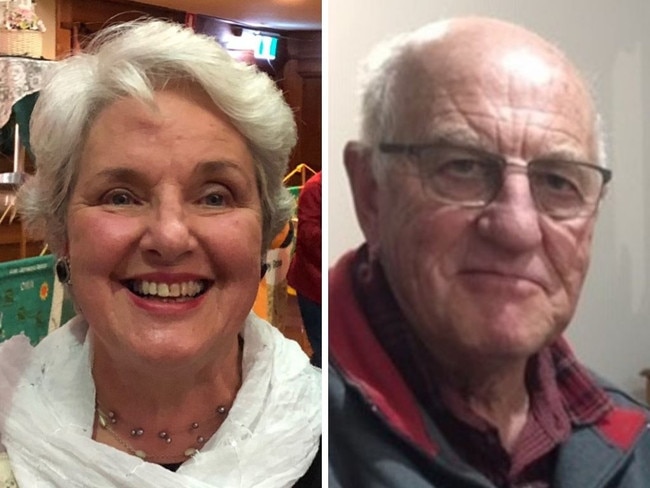Thousands of charred bone fragments found in search for missing campers, jury told
Dozens of photos of charred bone fragments revealing how the remains of missing campers Russell Hill and Carol Clay were found have been shown to a jury.

Police & Courts
Don't miss out on the headlines from Police & Courts. Followed categories will be added to My News.
Charred bone fragments found in a remote area of Victoria’s high country as part of a search for the remains of Russell Hill and Carol Clay have been shown to a jury.
The missing campers’ bodies were dumped off Union Spur Track, near Dargo, by Greg Lynn, 57, after an earlier confrontation took place at a campsite in the Wonnangatta Valley in March 2020.
The former Jetstar captain, who has pleaded not guilty to the murders of Mr Hill, 74, and Mrs Clay, 73, admitted hiding their bodies but claims they were accidentally killed in separate struggles involving a shotgun and a knife.
Now in the third week of evidence of Mr Lynn’s trial, the pre-recorded evidence of forensic anthropologist Soren Blau, who assisted with the search of the Union Spur site, was on Wednesday played to the Supreme Court.

The jury was told Dr Blau’s evidence was recorded earlier this month as she was on secondment overseas with the International Commission on Missing Persons.
Appearing via video link, she explained the search area measured approximately 20m by 10m and a “systematic and controlled” approach involving the sieving of soil to ensure all remains were recovered was taken.
Dozens of photographs showing small burnt bone fragments as they were found and after they had been transferred to the Victorian Institute of Forensic Medicine were shown to the court, as Dr Blau explained to the jury what they were looking at.

More than 2100 fragments were uncovered, many of which were burnt or so fragmented that their anatomy could not be determined.
“The photographs highlight ... the extreme fragmentation and small size of the majority of remains that were recovered,” she said.
Despite their state, Dr Blau said 146 fragments were identified as belonging to different parts of the body including the skull, spine, ankle, toe, tibia, hip and hand.
She said duplicate arm fragments indicated the remains belonged to at least two adults.

“Clearly in this case the preservation was so extremely poor that it wasn’t possible to provide further detail,” she said.
Three relatively preserved bones were selected for DNA analysis, Dr Blau said.
The jury previously heard DNA analysis of one of the selected bones — the only that was suitable — was a likely match for Mr Hill, while a skull fragment recovered from Bucks Camp — where the alleged murders took place — likely belonged to Mrs Clay.
Photos of other items including a silver ring and the remnants of a wrist watch found among the remains were also shown to the court.
Mark Gellatly, a forensic expert specialising in bloodstain pattern analysis, told the jury he examined a number of items including Mr Lynn’s shotgun and Nissan Patrol.
He said DNA testing of the inside of the shotgun’s barrel revealed a partial single source of DNA but there was not enough information to return a profile.
Mr Gellatly said he also examined the interior of Mr Lynn’s 4WD but no blood was detected.
The forensic expert’s evidence will resume on Thursday.



